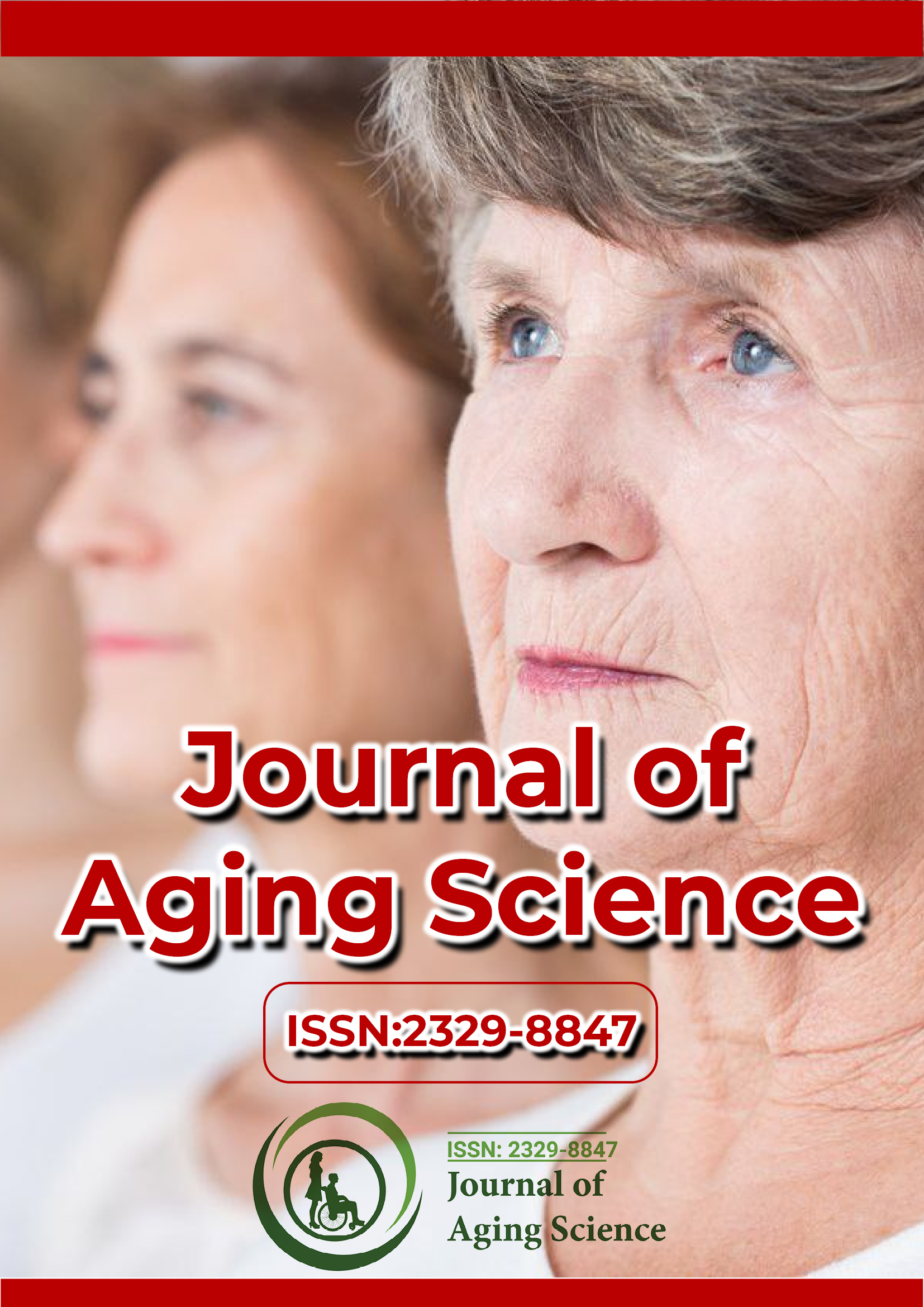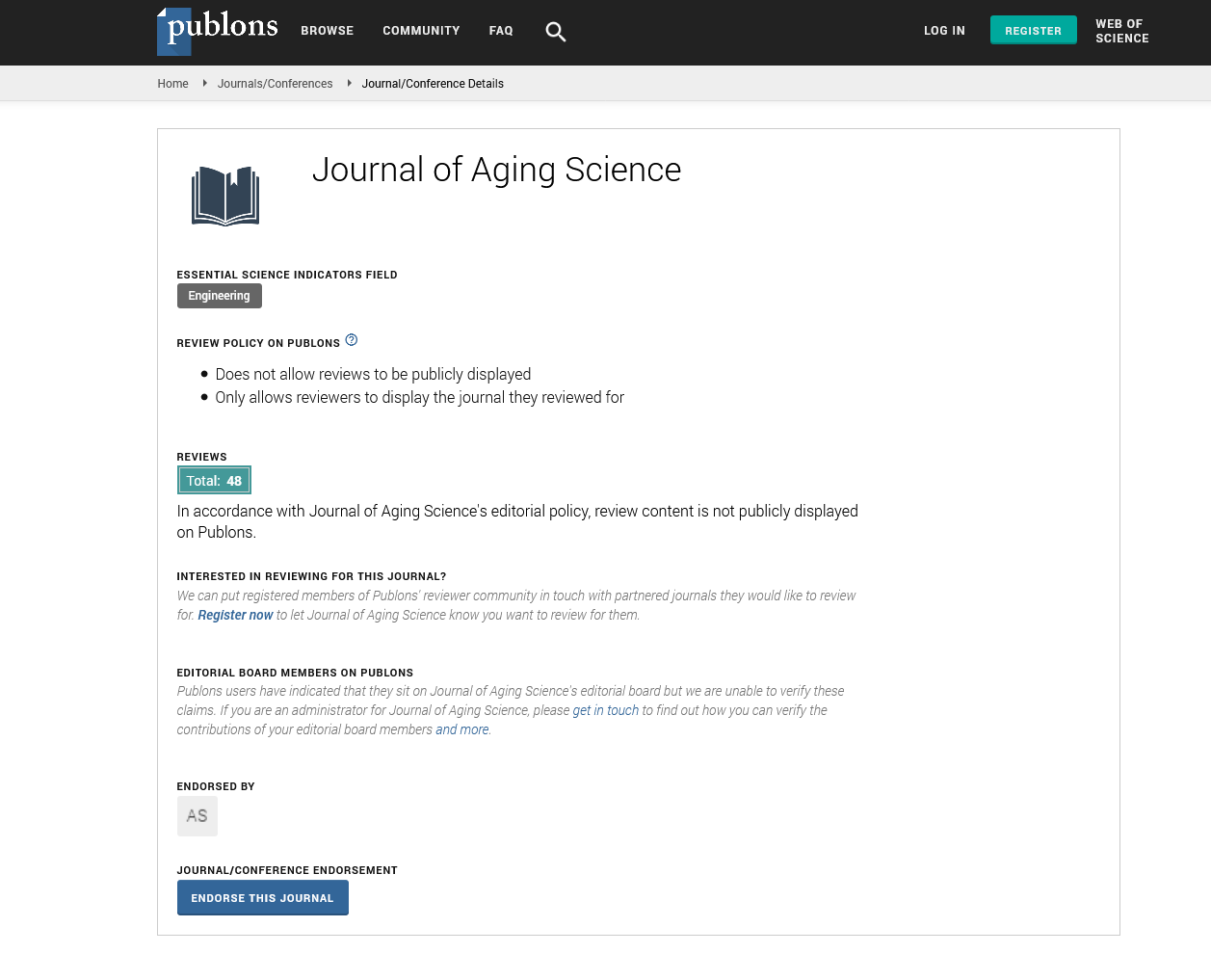Indexed In
- Open J Gate
- Academic Keys
- JournalTOCs
- ResearchBible
- RefSeek
- Hamdard University
- EBSCO A-Z
- OCLC- WorldCat
- Publons
- Geneva Foundation for Medical Education and Research
- Euro Pub
- Google Scholar
Useful Links
Share This Page
Journal Flyer

Open Access Journals
- Agri and Aquaculture
- Biochemistry
- Bioinformatics & Systems Biology
- Business & Management
- Chemistry
- Clinical Sciences
- Engineering
- Food & Nutrition
- General Science
- Genetics & Molecular Biology
- Immunology & Microbiology
- Medical Sciences
- Neuroscience & Psychology
- Nursing & Health Care
- Pharmaceutical Sciences
Opinion Article - (2025) Volume 13, Issue 3
Inflammaging and Chronic Inflammation: How Low-Grade Immune Activation Changes the Aging Process
Mike Wiking*Received: 30-Jun-2025, Manuscript No. JASC-25-29559; Editor assigned: 03-Jul-2025, Pre QC No. JASC-25-29559 (PQ); Reviewed: 17-Jul-2025, QC No. JASC-25-29559; Revised: 24-Jul-2025, Manuscript No. JASC-25-29559 (R); Published: 31-Jul-2025, DOI: 10.35248/2329-8847.25.13.421
Description
Aging is increasingly recognized as being influenced not only by genetic and metabolic factors but also by immune system activity. One of the defining features of aging is a phenomenon known as inflammaging, characterized by a persistent, low-grade inflammation that develops even in the absence of infection. Unlike acute inflammation, which is beneficial for fighting pathogens and promoting healing, chronic inflammation disrupts tissue integrity and contributes to many age-related diseases, including cardiovascular disorders, neurodegeneration, diabetes and cancer.
The origins of inflammaging are multifactorial. Over time, the immune system undergoes immunosenescence, a gradual decline in its ability to mount effective responses. Old immune cells produce excessive inflammatory cytokines, such as Lnterleukin-6 (IL-6) and Tumor Necrosis Factor-Alpha (TNF-α), while their ability to eliminate pathogens and clear damaged cells diminishes. This imbalance creates a persistent pro-inflammatory environment that damages tissues and accelerates biological aging.
Cellular senescence is another important driver. Senescent cells, which stop dividing in response to damage, accumulate in tissues with age. While initially protective, these cells secrete a mix of inflammatory molecules collectively known as the Senescence-Associated Secretory Phenotype (SASP). The SASP perpetuates inflammation, recruits immune cells and alters the surrounding microenvironment, promoting fibrosis and functional decline in tissues.
Mitochondrial dysfunction also contributes significantly to inflammaging. Aging cells accumulate damaged mitochondria that produce higher levels of Reactive Oxygen Species (ROS). ROS not only cause DNA and protein damage but also activate pro-inflammatory signaling pathways, further amplifying systemic inflammation. In parallel, impaired clearance of mitochondrial debris by autophagy leads to the release of mitochondrial DNA into circulation, which is mistaken by the immune system as a danger signal, fueling inflammatory responses.
Another factor is the increased burden of Damage-Associated Molecular Patterns (DAMPs). As tissues age, proteins, lipids and nucleic acids undergo modifications or fragmentation. These altered molecules act as DAMPs, triggering immune receptors and promoting inflammation. The body’s ability to clear such molecular debris diminishes with time, leading to accumulation and persistent immune activation.
The gut microbiome also plays an essential role in inflammaging. Aging is often associated with gut dysbiosis, a shift in microbial diversity and abundance. Dysbiosis increases gut permeability, allowing microbial products such as Lipopolysaccharides (LPS) to leak into circulation. This "leaky gut" phenomenon exposes the immune system to constant stimulation, amplifying systemic inflammation and linking gut health directly with age-related decline.
The consequences of inflammaging extend across multiple systems. In the cardiovascular system, chronic inflammation accelerates atherosclerosis by promoting the buildup of fatty plaques in blood vessels. In the brain, it contributes to neurodegenerative disorders such as Alzheimer’s and Parkinson’s disease through microglial activation and neuronal injury. In the metabolic system, inflammatory cytokines interfere with insulin signaling, increasing the risk of type 2 diabetes. Inflammation also plays a role in osteoporosis, sarcopenia and frailty by disrupting bone and muscle homeostasis.
Managing inflammaging has become a central goal in aging research. Lifestyle interventions are among the most effective strategies. Regular physical activity reduces systemic inflammation by lowering circulating cytokines and improving immune regulation. Dietary interventions, particularly those rich in omega-3 fatty acids, polyphenols and fiber, modulate the gut microbiome and reduce inflammatory mediators. Caloric restriction and intermittent fasting have shown consistent benefits in reducing inflammatory markers and extending lifespan in experimental models.
Pharmacological approaches are also being investigated. Nonsteroidal Anti-Inflammatory Drugs (NSAIDs) provide short-term relief but are unsuitable for long-term use due to gastrointestinal and cardiovascular side effects. Novel approaches include senolytics, drugs that selectively eliminate senescent cells, thereby reducing SASP-driven inflammation. Early trials in animal models have demonstrated improvements in physical function and delayed onset of age-related diseases. Other promising compounds include metformin, which dampens inflammatory signaling while improving metabolic function and rapamycin, which targets nutrient-sensing pathways linked to immune activation.
The role of the microbiome in inflammaging has also encouraged the development of probiotics, prebiotics and fecal microbiota transplantation as potential interventions. Modulating gut flora shows promise in lowering systemic inflammation and restoring immune balance in older individuals. Personalized approaches that combine microbiome profiling with tailored dietary recommendations may further enhance effectiveness.
Conclusion
Inflammaging represents a key biological process linking aging with chronic disease. Unlike acute inflammation, which is protective, chronic low-grade inflammation gradually erodes tissue function and accelerates the onset of age-associated conditions. Its origins lie in immune dysfunction, senescent cell accumulation, mitochondrial damage, molecular debris and gut dysbiosis. Interventions to reduce inflammaging include lifestyle practices such as exercise, healthy nutrition and caloric control, as well as emerging pharmacological strategies like senolytics and metabolic modulators. The microbiome offers an additional avenue for intervention, highlighting the interconnected nature of immunity, metabolism and aging.
Citation: Wiking M (2025). Inflammaging and Chronic Inflammation: How Low-Grade Immune Activation Changes the Aging Process. J Aging Sci. 13:421.
Copyright: © 2025 Wiking M. This is an open-access article distributed under the terms of the Creative Commons Attribution License, which permits unrestricted use, distribution and reproduction in any medium, provided the original author and source are credited.

